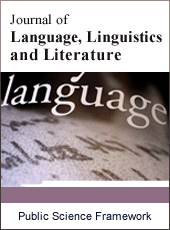Journal of Language, Linguistics and Literature
Articles Information
Journal of Language, Linguistics and Literature, Vol.4, No.2, Jun. 2018, Pub. Date: Jun. 6, 2018
Cognitive Interpretation of Hemingway’s “Up in Michigan”
Pages: 29-33 Views: 2485 Downloads: 1003
[01]
Yujie Su, College of Humanities, Wenzhou University, Wenzhou, China; English Department of Yeosu Campus, Chonnam National University, Gwangju, South Korea.
Hemingway’s “Up in Michigan” ends with no more information after Liz’s seduction, which leaves the readers much possibility of interpretation. Hemingway himself says that the story is not dirty, but sad. The mist seems to entail some hints about the coming drastic changes taking place in Liz’s life after the seduction. Besides, though the whole story develops in the seemingly mode of a love story or a romance between a woman and a man, there seems some mismatches between the protagonists. The present paper interprets the relations between Liz and Jim in terms of the cultural model or schemas of romance, showing the disparity between Liz and Jim concerning love and sex and offering a deeper and reasonable understanding of what Liz might suffer after the seduction.
Cognitive Interpretation, Cultural Model, Romance, Love, Sex
[01]
Petry, A. H. “Coming of Age in Hortons Bay: Hemingway’s ‘Up in Michigan’.” New Critical approaches to the short stories of Ernest Hemingway. Ed. Benson, J. J. Durham: Duke University Press 1990.353-359.
[02]
Smith, P. New Essays on Hemingway’s Short Fiction. Beijing: Peking University Press, 2007.
[03]
Hemingway, E. “Up in Michigan.” The Complete Short Stories of Ernest Hemingway (The Finca Vigía Edition). New York: Simon & Schuster Inc., 1987: 59-62.
[04]
Shaver, P. R., Morgan, H. J. and Shelley Wu. Is Love a “Basic” Emotion. Personal Relationships. 3 (1996): 81-96.
[05]
Konx, D. H., & Sporakowaski, M. J. “Attitudes of College Students toward Love.” Journal of Marriage and the Family 30.4 (1968): 638-642. Web. 30 May 2016.
[06]
Sternberg, R. J. “A Triangular Theory of Love.” Psychological Review 93 (1986): 119-135.
[07]
Sternberg, R. J. “Triangular Love.” The Psychology of Love. Ed. Sternberg, R. J. and M. L. Barnes. New Haven, Conn.: Yale University Press. 1988. 119-138.
[08]
Fisher, H. “The Nature of Romantic Love.” The Journal of NIH Research 6.4 (1994): 59-64.
[09]
Zac Poonen. Sex, Love & Marriage. http://www.cfcindia.com/books/sex-love-marriage. Web. May 24, 2016.
[10]
Gonzaga, Gian C., Rebecca A. Turner, D. Keltner, B. Campos, and Margaret Altemus. “Romantic Love and Sexual Desire in Close Relationships.” Emotion, The American Psychological Association 6. 2 (2006): 163-179.
[11]
https://en.wikipedia.org/wiki/Methodist_Church_of_Great_Britain. web. May 23, 2016.
[12]
Oxford Advanced Learner’s Dictionary (the 7th edition). New York: Oxford University Press, 2005.
[13]
Li, Xue-wu, and Xiang Li. “Analysis on Patrick Kong’s Romantic Films.” Journal of Jinan University (Philosophy and Social Sciences) 6 (2011): 91-94, 161.

ISSN Print: 2381-7054
ISSN Online: 2381-7062
Current Issue:
Vol. 6, Issue 1, March Submit a Manuscript Join Editorial Board Join Reviewer Team
ISSN Online: 2381-7062
Current Issue:
Vol. 6, Issue 1, March Submit a Manuscript Join Editorial Board Join Reviewer Team
| About This Journal |
| All Issues |
| Open Access |
| Indexing |
| Payment Information |
| Author Guidelines |
| Review Process |
| Publication Ethics |
| Editorial Board |
| Peer Reviewers |


